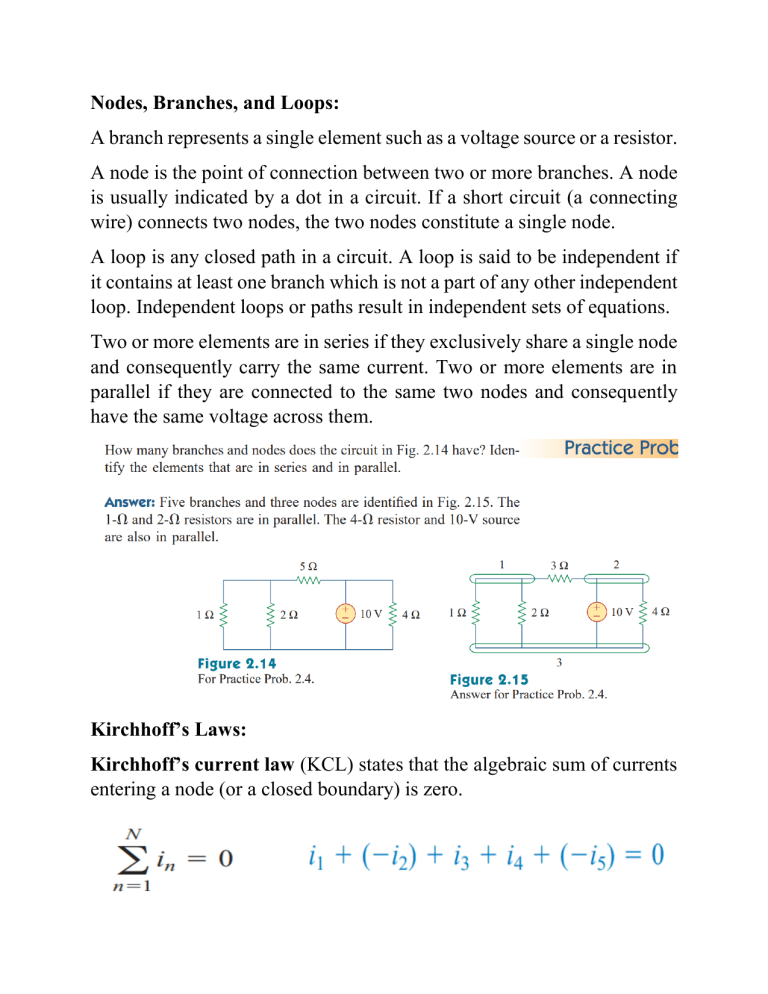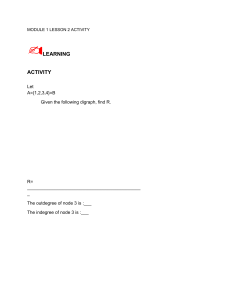APznzabPRwVtxDhb0u 99CCIePXBFQDWv5XXkBjr09LWaH5bcXPCBFaAbB5CG e0tXtSUyffp9xLX-2yjF0vdiNhMEa4gYvfvUWQSWkiVshujIW5e2km6LUu7Nl2z cq6DzEf6K4-ODsub0aM6Kfl CkvKUrssWx96HWjFiVL- T0elT2NbOYqSvJcEIgrUsU9ywqsIKEdgPHeJCyF9Cy
advertisement

Nodes, Branches, and Loops: A branch represents a single element such as a voltage source or a resistor. A node is the point of connection between two or more branches. A node is usually indicated by a dot in a circuit. If a short circuit (a connecting wire) connects two nodes, the two nodes constitute a single node. A loop is any closed path in a circuit. A loop is said to be independent if it contains at least one branch which is not a part of any other independent loop. Independent loops or paths result in independent sets of equations. Two or more elements are in series if they exclusively share a single node and consequently carry the same current. Two or more elements are in parallel if they are connected to the same two nodes and consequently have the same voltage across them. Kirchhoff’s Laws: Kirchhoff’s current law (KCL) states that the algebraic sum of currents entering a node (or a closed boundary) is zero. where N is the number of branches connected to the node and is the nth current entering (or leaving) the node. Sum of the currents entering a node is equal to the sum of the currents leaving the node. Kirchhoff’s voltage law: KVL states that the algebraic sum of all voltages around a closed path (or loop) is zero. The sign on each voltage is the polarity of the terminal encountered first as we travel around the loop. We can start with any branch and go around the loop either clockwise or counterclockwise. Suppose we start with the voltage source and go clockwise around the loop as shown; then voltages would be and in that order. Series Resistors and Voltage Division: Parallel Resistors and Current Division:



